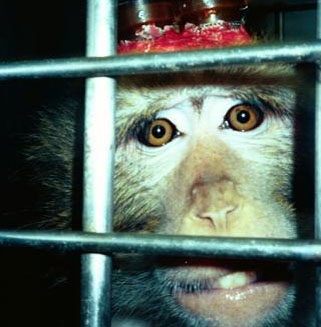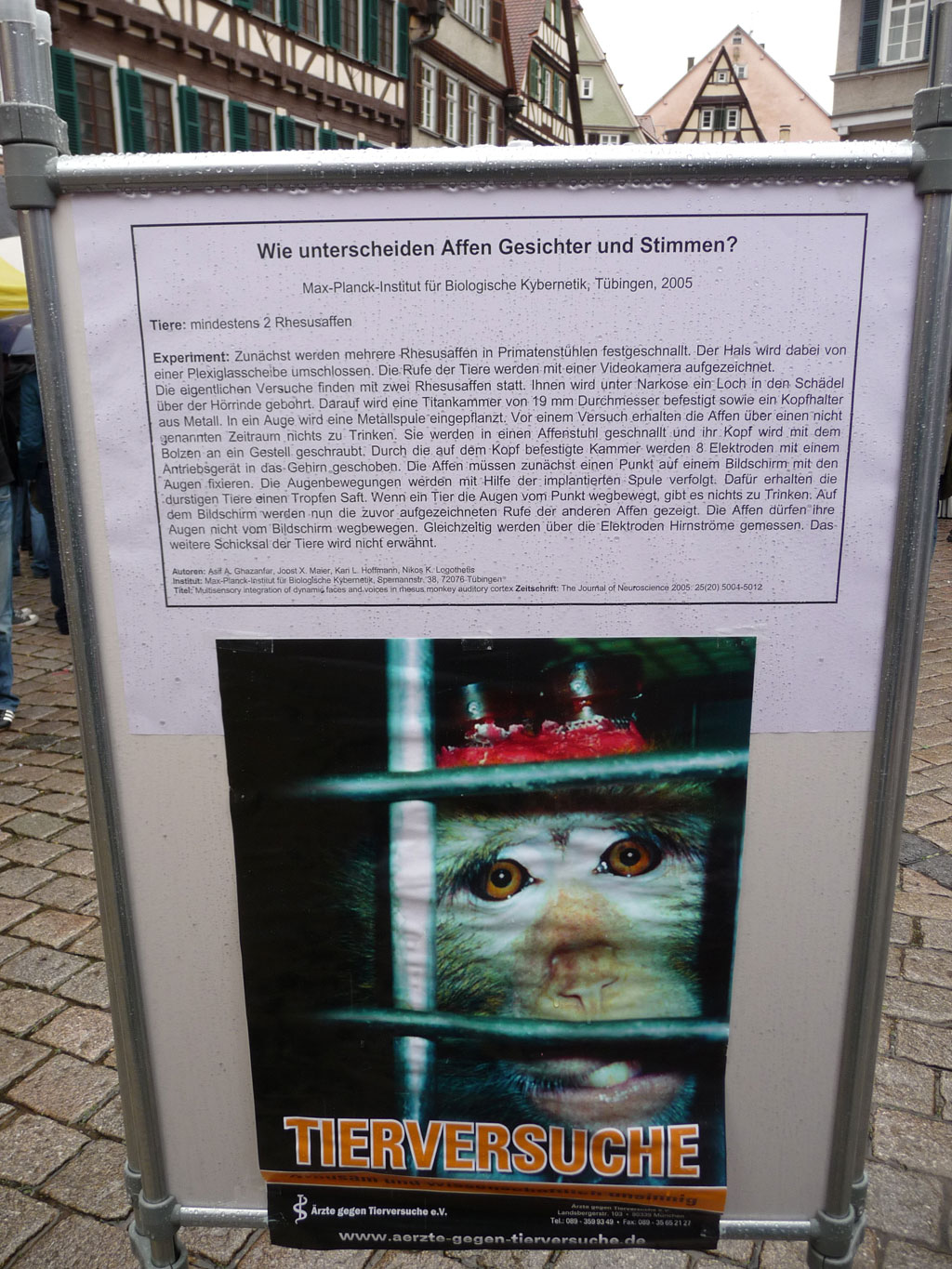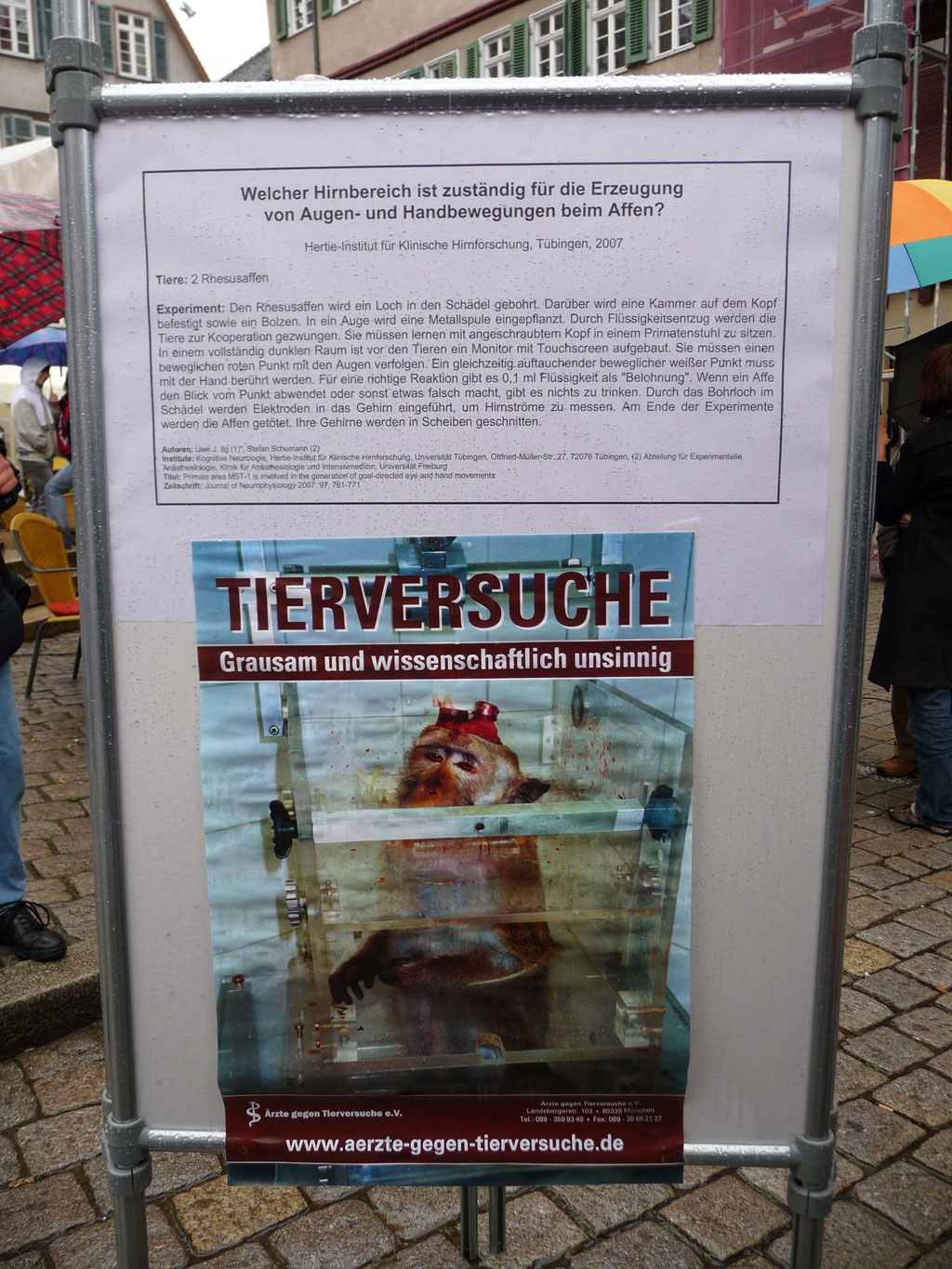
The Myths of Animal Research Opponents - The Reality of the Max Planck Institute
| Implants according to animal research opponents (presented at a demonstration on April 18, 2009 in Tübingen) | | Rhesus monkey with implants. The titanium implant and recording chamber are of the type currently used in our institute. |
|  | |
| Credits: Ärzte gegen Tierversuche (Doctors Against Animal Experiments Germany) | Credits: Max Planck Institute for Biological Cybernetics | |
What exactly are you seeing in this picture? A monkey sitting in its cage and caught in the glare of a bright camera flash. Above the top horizontal bar we see an unidentified red mass that appears to be connected with strange metal pieces. We would like to point out that the red color corresponds neither to blood nor to the dental cement used in early implant methods.
Picture of the demonstration in Tübingen on April 18, 2009. | What exactly are you seeing in this picture? A rhesus monkey is sitting in a primate chair. A titanium implant has been implanted in the middle of its skull to immobilize its head during the experiments. This is necessary because otherwise it would not be possible for mechanical reasons to carry out measurements of eye movements and microelectrode recordings. Comparable examinations with humans require fixation of the head as well. |








